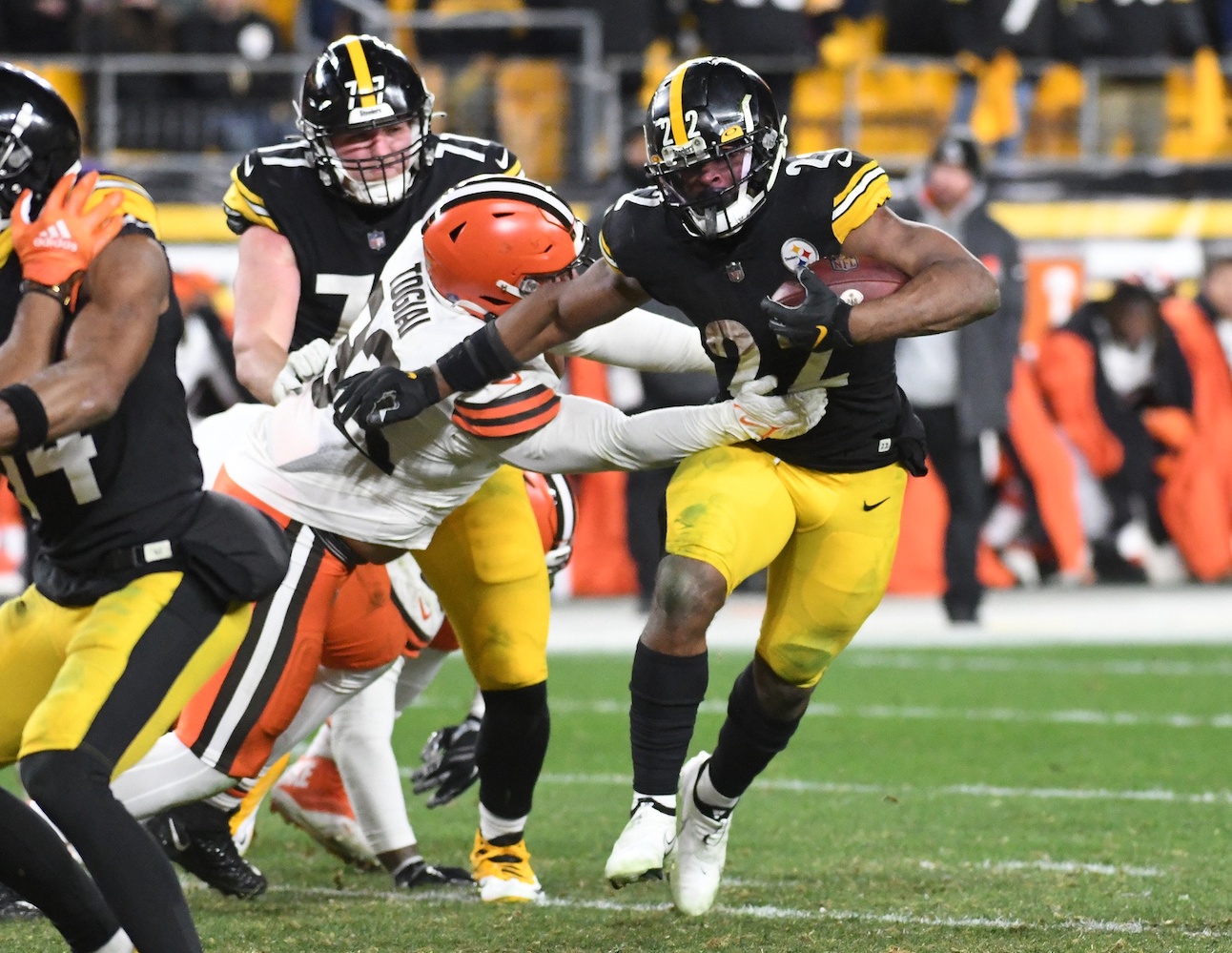There’s something going on with the Los Angeles Chargers’ offense.
After getting off to a hot 4-1 start that included wins over two divisional rivals—the Las Vegas Raiders and Kansas City Chiefs—to put them alone in first place in the AFC West, the Chargers have dropped three of their last four games. Their offense went from looking like the explosive one of a contender—especially after putting up 47 points on Cleveland—to a significantly less dynamic one in recent weeks. A significant part of that change has been how offensive coordinator Joe Lombardi has been utilizing quarterback Justin Herbert in response to the way defenses have been playing him.
Through the first five weeks of the season, the Chargers had the eighth-most explosive plays—12-plus-yard rushes or 16-plus-yard passes—in the NFL. In the last four weeks, the number of Los Angeles’ explosive plays have been cut almost in half, dropping them to 25th in the league in creating such plays. The Chargers just haven’t been as dynamic, and a large part of that issue has been the lack of deep passes in the last few weeks.
To underscore that point, Herbert’s longest pass attempt against the Minnesota Vikings in Week 10 barely went 20 yards past the line of scrimmage... and was picked off. According to Next Gen Stats, the large majority of his 34 pass attempts were targets within 10 yards of the line of scrimmage—only seven pass attempts traveled further.
One of the biggest issues for Herbert and the Chargers on their deep passing plays is the—as head coach Brandon Staley called it –– “concerted effort” by defenses to shut down Herbert’s cannon arm and the threat of Mike Williams as a deep-ball catcher. Williams is one of the best deep-ball receivers in the NFL; as of Week 5 of this season, no receiver had run more go routes than (239) since the beginning of 2020. Through five weeks, Williams had 31 catches for 471 yards (15.2 yards per reception) and six touchdowns. But during L.A.’s recent slump in their last four games, he’s recorded just 137 yards on 10 catches. He hadn’t caught more than two passes in three games before catching just four on Sunday against the Vikings. He also dropped a potential touchdown in the game’s final six minutes when Los Angeles was trying to overcome a 10-point deficit.
Opposing defenses have seen what the dynamic duo of Herbert and Williams have done to previous opponents with their deep passes. As a result, they’ve been doing all they can to force the young quarterback away from showing off his incredible arm and into having to use short passes to drive down the field. That forces the offense to execute well, from the quarterback making good decisions and smart reads of the defense to receivers not dropping catches.
Add in the heavy and well-disguised blitzing the Vikings employed on Sunday, and the task of driving down the field in short spurts becomes even harder. Minnesota blitzed the opposing quarterback early and often—they did it on about 40% of his dropbacks—and it caused a big drop in Herbert’s productivity. He looked like he was rushing through his normal process on dropbacks, missing potential deep throws, and confusing his reads on what the defense was giving him.
While Herbert must get better in executing plays under pressure and making short passes—and the receivers have to stop dropping the ball—some of the blame for the offense’s recent shortcomings must fall on its coordinator. Lombardi needs to come up with a game plan that can both drive the offense downfield on shorter plays and open up the deep ball to let Herbert show off his arm talent.
Whether it’s from play-action or some sort of other misdirection, it’s important to give a young quarterback with an arm like Herbert’s opportunities to create explosive plays. Other young gunslingers with big arms have been able to do it despite opposing defenses trying to take that away, so there must be a way for Los Angeles to find similar success. If they don’t, they’ll waste Herbert’s potential to manufacture explosive plays, and the team will continue to struggle to win games.
The Chargers still have a good offense—they rank sixth in the NFL in offensive Defense-adjusted Value Over Average (DVOA)—they just need to return to explosive form. Finding ways to let Herbert show off his arm will help as they move forward in their quest for the playoffs and possibly even a division title.
Filed In
Related Articles
Cincinnati Bengals
Should Joe Burrow Be The NFL MVP?
- Jan 07, 2022
NFL
Steelers Hit A Home Run With Najee Harris
- Jan 07, 2022
Written By


































